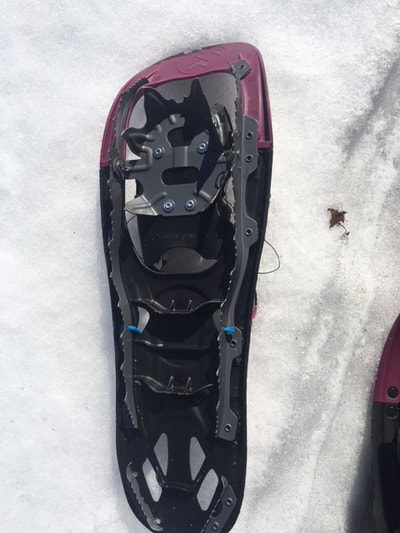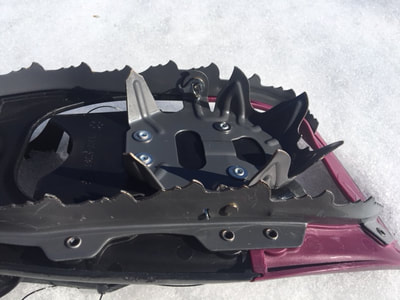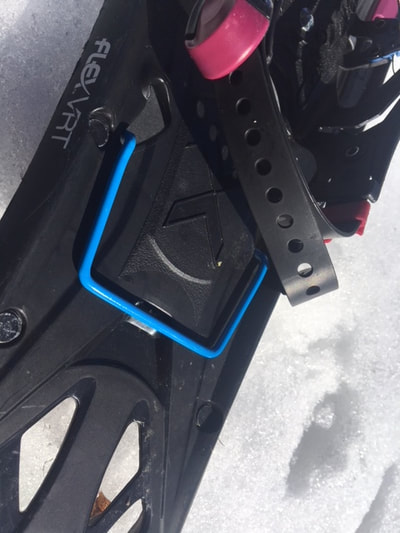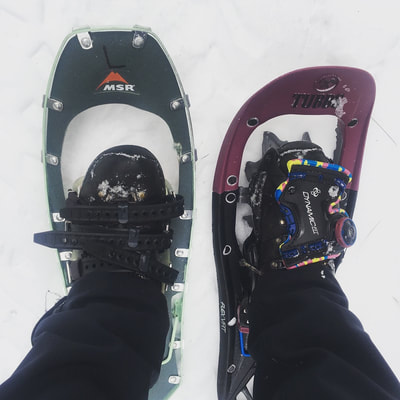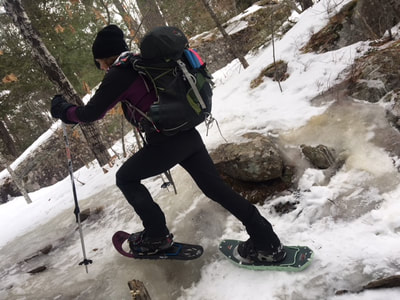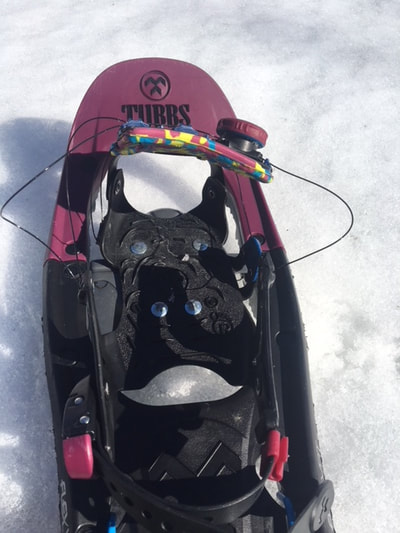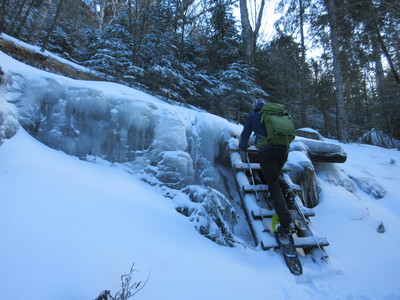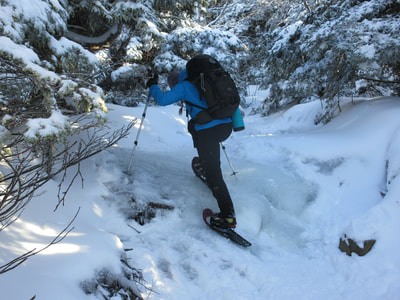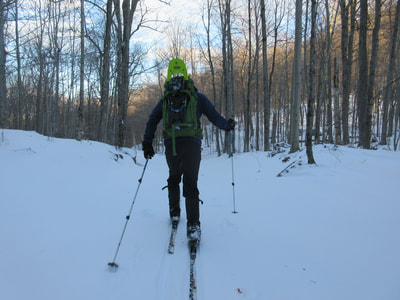From KPW Outdoors
The Tubbs Flex VRT is an aggressive backcountry snowshoe made for mountain use. I tested these snowshoes over the course of 3 months during winter 2017-2018, putting on 62 miles/100km in a variety of snowy environments. As a previous owner of the MSR Lightning Ascents and Atlas Elektra’s, I feel I can accurately gauge the performance of the Flex VRTs in comparison to its competitors.
Tubbs Flex VRT- Mens and Womens
Price: $259 USD
Size: 22 (womens), and 24 and 28 (mens)
Weight: 4lbs (22), 4.5lbs (24), and 5lbs (28)
Features:
The Tubbs Flex VRT features a flexible plastic decking with a flexible tail area, heel lifter bar, aggressive Viper 2.0 toe crampon and traction rails, and a hinged dynamic fit binding system.
The binding system uses BOA cinching technology, used in helmets as well as footwear for golf, hockey, snowboarding, hiking and running.
Climbing ability- Upon first glance at these snowshoes, you can’t help but notice the aggressive crampon under foot as well as the gnarly side traction rails. After months of testing one thing is for sure: these snowshoes are made for climbing. Hard pack, powder, ice- these snowshoes are amazing at ascending and descending the steepest terrain. My favourite place to use them is the Adirondacks! My husband bent the crampon on his MSR Lightning Ascents (they have now changed the material as this was common) but has yet to have any issues with Flex VRT carbon steel crampons.Binding system- I am in love with this simple to use binding system. The harness opens up so easily that I can step my foot in and be ready to go in no time. For people like me with cold hands, I don’t even have to take off my mitts to get my foot in or out of the shoe. My husband and I both appreciated not having to do up 8 individual rubber straps each time we put on and took off our snowshoes like we did with our MSRs. The BOA system is very easy to use but the cables are exposed and I worry about the longevity in the backcountry and worry if one broke while adventuring. You can buy replacement cables if one does break and so far I have not had any issues. The binding system is hinged, allowing for freedom of movement unlike my old Atlas Elektra snowshoes, which recoiled like a flip flop sending snow up my backside. Lastly, I used the binding with mountaineering boots, hiking boots, and winter boots and the binding fit well on each type without an pressure points.
Stride- The Flex VRT snowshoes have one of the most natural stride feelings I have ever had in a snowshoe. Both my husband and I love how you can just walk normally and not have to adjust how you walk. Efficiency when moving in snow is important and I feel like these snowshoes do not feel clunky or awkward.
Decking- The flexible plastic decking especially in the tail area is useful on uneven terrain. In the Adirondacks, roots and rocks are covered but snow makes travel sometimes awkward on snowshoes except for the Flex VRTs. The torsional decking adapts to the terrain and allows for ease of travel. The only issue I had with the decking is on hard pack terrain when the decking creates a lot of noise making it somewhat difficult to have a conversation with your buddy.
Float- In deep powder I found the float sufficient for my weight. The decking was able to displace my body weight with a pack and lifting my foot wasn’t arduous.
Durability- After putting these snowshoes through some tough environments, the Flex VRTs are showing very little signs of wear. I am very optimistic that these snowshoes will pass the test of time and be able to withstand the abuse that backcountry travel inflicts on them. So far they are bomber!
Price- Tubbs Flex VRT wins the price comparison– The Tubbs Flex VRT MSRP: $259 USD, MSR Lightning Ascent $299 USD, and Atlas Aspect $289 USD
Weight- As a woman who travels in the backcountry I count every gram I carry. The Tubbs Flex VRT 22 inch long snowshoe pair weighs 4lbs vs the MSR Lightning Ascent 22in snowshoe weighs in at 3lbs 12oz. Believe it or not, you can really feel the extra weight- one of my test days involved wearing one of each. If the snowshoes could drop an ounce or two it would make a big difference on long days.Packability- I carried these snowshoes on a backpack a few times. Due to the bulky binding system, they don’t pack together as well as the MSRs but they are better than my old Atlas pair.
Heel Lifter Bar- Although I loved the heel lifter bar and its height, I found it difficult to raise while wearing thicker mitts. To lift it, you had to slide your finger along the a depression in the decking (see photo above) which worked using thinner handwear but not thicker. I would suggest using a bar with a curve it in or creating an easier way to lift the bar up.
Best Uses: Steep mountain terrain where grip is essential.
Full disclosure: Tubbs provided me with these snowshoes for the purpose of this review. The opinions expressed are completely my own.
